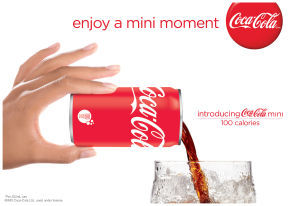BevWire recently noticed that Coca-Cola’s Fanta flavors has made some subtle changes to their packaging. The take-home 1.5L bottles were upsized and replaced with 2L bottles to align with the rest of their take-home offerings like Coke, Diet Coke, Sprite, and so on. I believe their packaged cans were also 10 to a case before, and now those have been increased to 12 cans per case. Not sure what led to this decision, but it should be viewed as a good move all around. Manufacturer, retailers, and consumers alike should all be happier at the end of the day.
The increased 500ml for Fanta will provide cost savings for Coca-Cola. They no longer have to source a different shape & size for their take-home bottles. With the exception of the Canada Dry Green Tea Gingerale, all of Coca-Cola’s take-home bottles all take the iconic Coke contour shape. This will also provide for stronger brand recognition as a Coca-Cola beverage product since this bottle shape is patented, and only Coca-Cola products can be bottled in this format. The cost savings also transfer onto the production floor. The up-sizing for both bottles and cans means that the automated assembly lines do not have to refitted to bottle and package different sized products. Delivery to customer also also made easier as the case stacking inside the delivery trucks are are uniform. Pretty much a no-brainer for the beverage organization, which leads me to wonder…why was this not done in the first place?
At the retailer level, the shelf sets don’t appear to be affected (see image above). The pricing also does not really change since it must line-up with the rest of the 2L take-home bottles. Ultimately, it’s business as usual for the retailers.
Among consumers, this may be an unexpected bonus when they intend to buy this refreshment. Coming in-store and to the beverage aisle, the shopper may very well expect to pick-up a 1.5L bottle of Fanta and instead find that Fanta has given them an extra 500ml. Will this lead to stock-up behavior? Possibly. There will also be some form of short-term gain when larger value is perceived (in this case, more Fanta for the same price).
 The next step for the Coca-Cola would be the align their single-serve Fanta bottles with the rest of the single-serve assortment. The Fanta bottle contains 473ml, while the rest of the beverage manufacturer’s single-serve portfolio houses 591ml. With the cost savings seen for the take-home adjustment, wouldn’t there be even more cost savings if the changes were applied to the entire Fanta assortment? Retailers wouldn’t notice too much of a difference in terms of stocking, but this may lead to a short spike in sales. Your move, Coca-Cola – just putting the idea out there.
The next step for the Coca-Cola would be the align their single-serve Fanta bottles with the rest of the single-serve assortment. The Fanta bottle contains 473ml, while the rest of the beverage manufacturer’s single-serve portfolio houses 591ml. With the cost savings seen for the take-home adjustment, wouldn’t there be even more cost savings if the changes were applied to the entire Fanta assortment? Retailers wouldn’t notice too much of a difference in terms of stocking, but this may lead to a short spike in sales. Your move, Coca-Cola – just putting the idea out there.





 BevWire walked into a convenience store the other day looking to pick up a Canada Dry Green Tea Gingerale (far left) and ended up picking up a White Tea Gingerale (left) by mistake. I thought the red bottlecap was just a packaging update, but turns out it’s another gingerale flavor from Canada Dry altogether. I must admit, it does taste delicious. However, what are the chances that other people may have the same problem, picking up one flavor by accident when they meant to get the other one? The two bottle’s packaging looks almost identical – only differences are the cap colors and the packaging’s edges on the bottles.
BevWire walked into a convenience store the other day looking to pick up a Canada Dry Green Tea Gingerale (far left) and ended up picking up a White Tea Gingerale (left) by mistake. I thought the red bottlecap was just a packaging update, but turns out it’s another gingerale flavor from Canada Dry altogether. I must admit, it does taste delicious. However, what are the chances that other people may have the same problem, picking up one flavor by accident when they meant to get the other one? The two bottle’s packaging looks almost identical – only differences are the cap colors and the packaging’s edges on the bottles.
